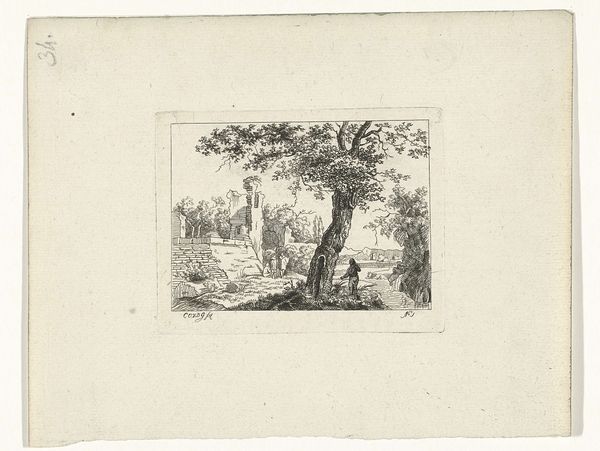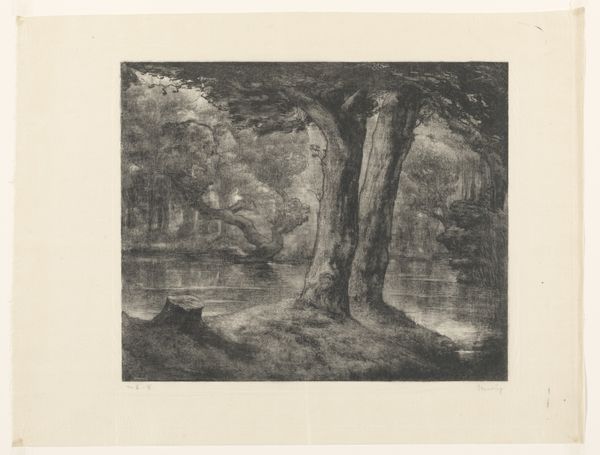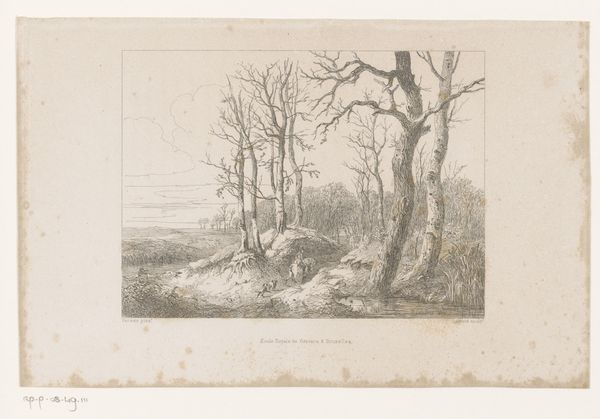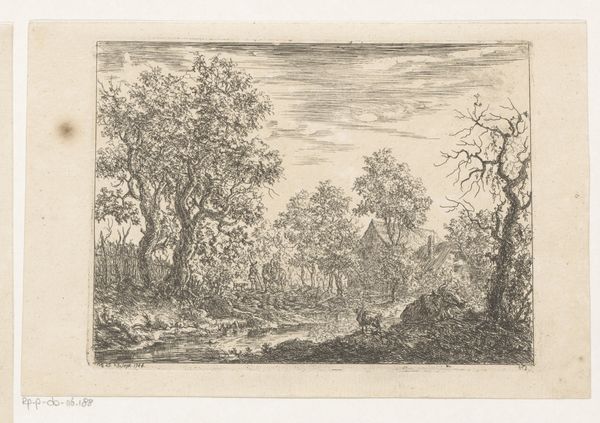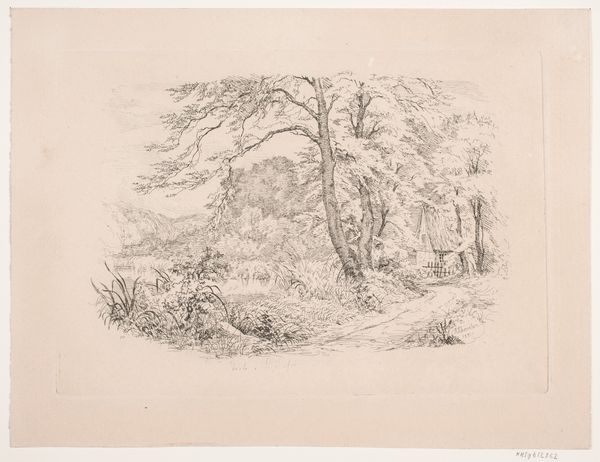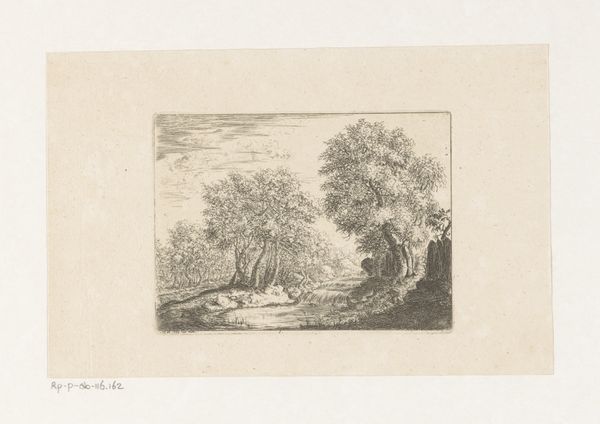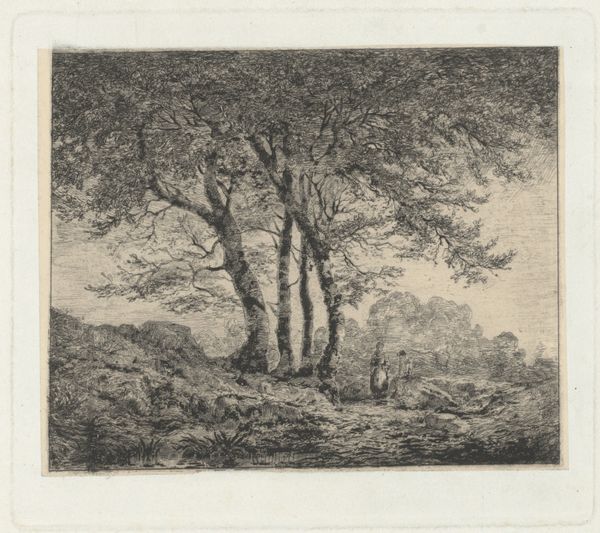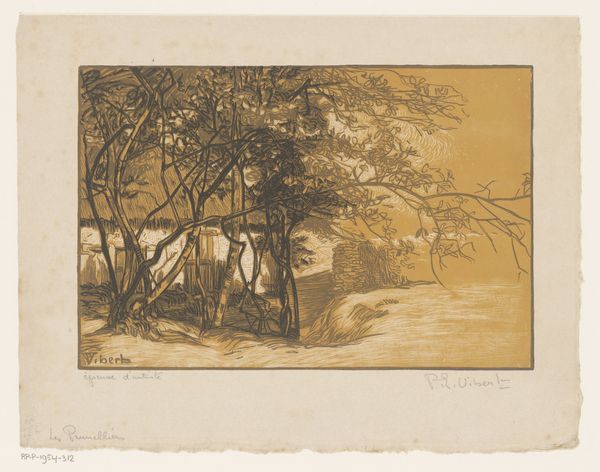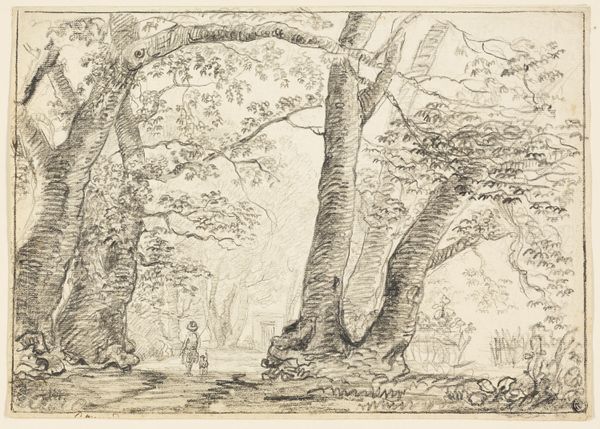
drawing, etching, ink
#
drawing
#
narrative-art
#
baroque
#
etching
#
landscape
#
figuration
#
ink
Dimensions: height 166 mm, width 213 mm
Copyright: Rijks Museum: Open Domain
Curator: This etching, entitled "Heuvel met poort," or "Hill with Gate," was created by Frederick Bloemaert sometime after 1635. Editor: My initial impression is one of foreboding. There's a stillness, a quiet menace almost, in this sparse landscape. The gate-like structure at the summit… is it a gallows? Curator: It very well could be. Bloemaert worked during a period of intense social and political upheaval in the Netherlands. Consider the historical context. Public executions were not uncommon. This piece may allude to that atmosphere of social control and the ever-present threat of violence faced by marginalized communities. Who held the keys to such gates? Editor: From a formal perspective, I'm struck by how the artist uses line. The etched lines are delicate, yet they create a strong sense of volume, especially in the way he renders the hill itself. It rises sharply, dividing the scene into distinct areas, focusing your gaze. Curator: Absolutely. And the figures within that landscape reinforce the sociopolitical narrative. There is a class distinction—a hierarchy. Two figures are posed idly at the lower left, with another scrambling up the slope on the right side of the image. What are they reaching toward or fleeing from? Bloemaert utilizes that stark contrast between light and shadow to highlight inequality. Editor: Yes, there’s an unresolved tension between light and dark. Look how the light catches the bare branches, drawing attention to the imposing structure at the summit, while the shadowed base seems to obscure any possibility of a clear narrative. This strategic use of chiaroscuro guides the eye, building drama and highlighting thematic elements. Curator: Indeed. This landscape can also be interpreted through an ecological lens. The skeletal trees suggest a barren, perhaps exploited landscape. Considering contemporary debates about environmental justice, it provokes thought about the long-term effects of power structures on our shared earth. Whose land are these figures treading upon, and at what cost? Editor: Well, it appears our conversation reveals how the composition can reveal both personal expression and socio-historical meaning embedded in the imagery, rewarding viewers from multiple perspectives. Curator: Ultimately, the artwork encapsulates not just an image but the echoes of an epoch defined by transition, uncertainty, and struggles against oppressive order. Thank you.
Comments
No comments
Be the first to comment and join the conversation on the ultimate creative platform.

